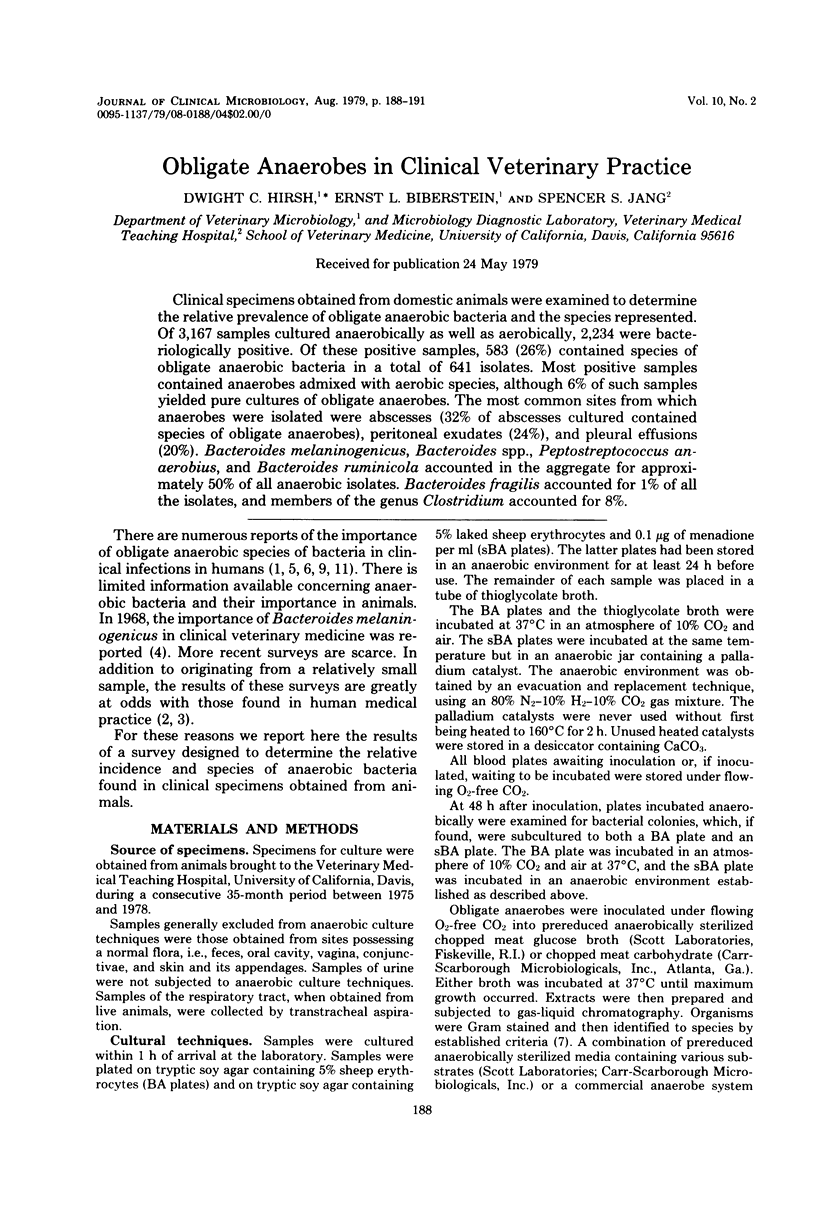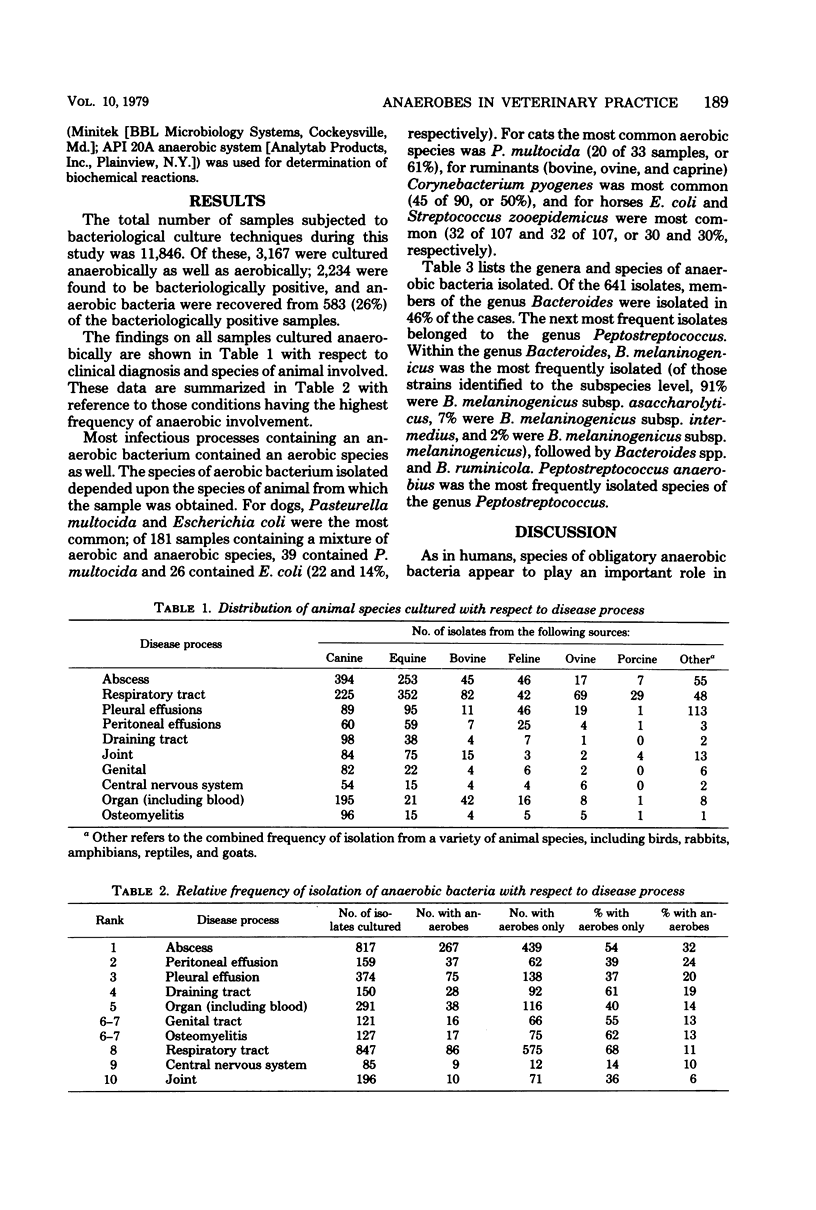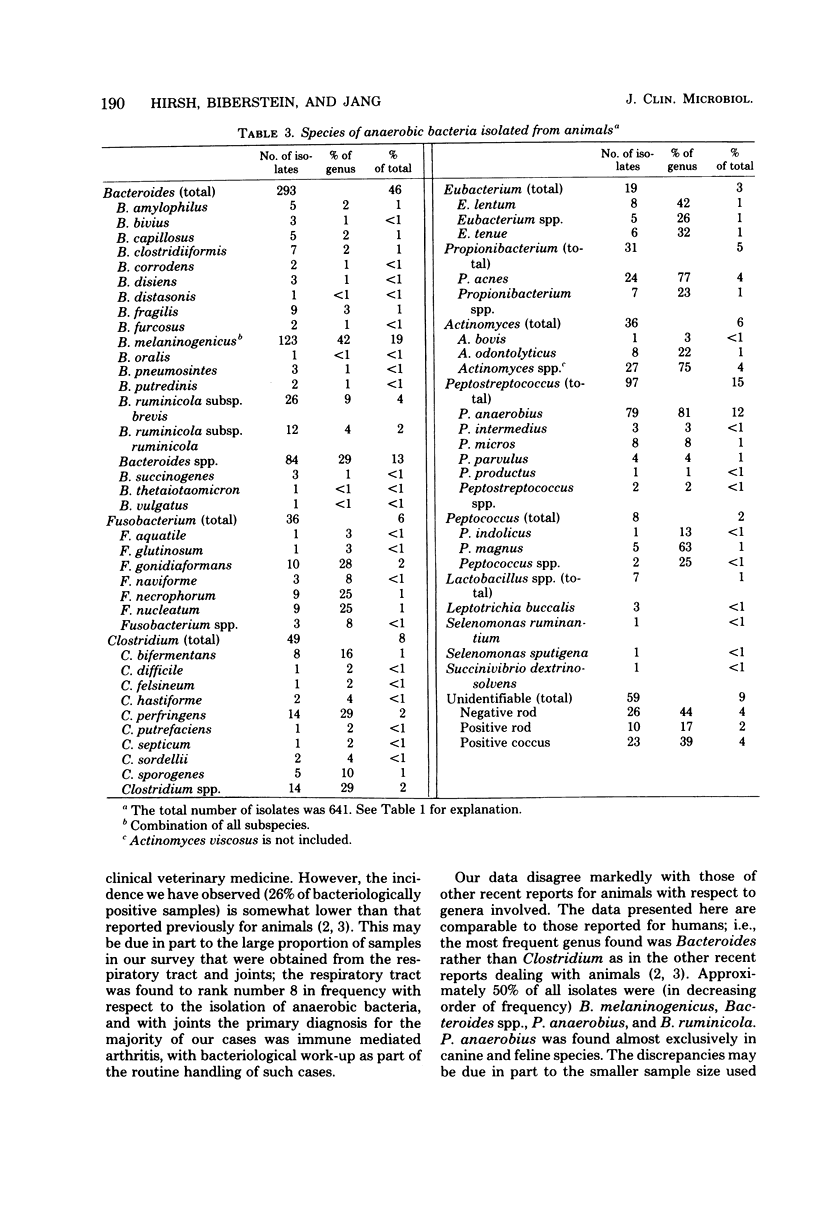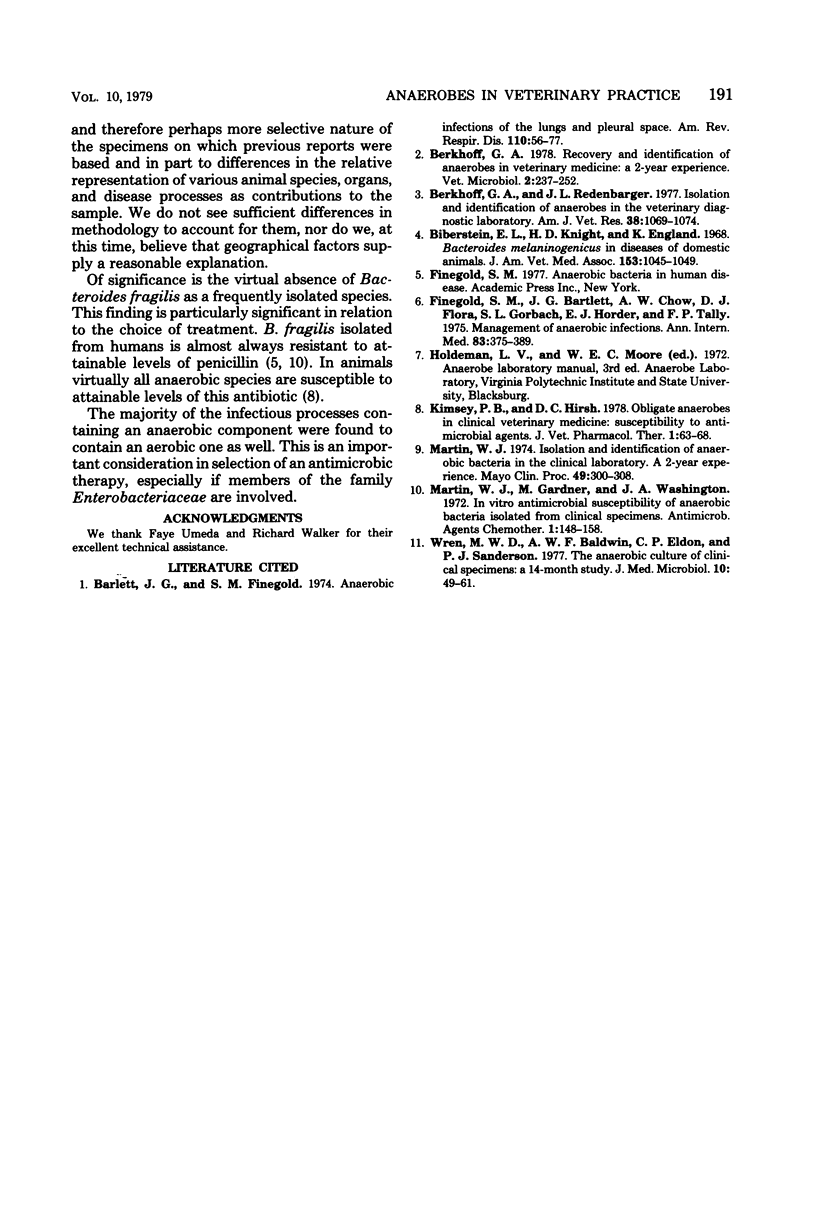Abstract
Clinical specimens obtained from domestic animals were examined to determine the relative prevalence of obligate anaerobic bacteria and the species represented. Of 3,167 samples cultured anaerobically as well as aerobically, 2,234 were bacteriologically positive. Of these positive samples, 583 (26%) contained species of obligate anaerobic bacteria in a total of 641 isolates. Most positive samples contained anaerobes admixed with aerobic species, although 6% of such samples yielded pure cultures of obligate anaerobes. The most common sites from which anaerobes were isolated were abscesses (32% of abscesses cultured contained species of obligate anaerobes), peritoneal exudates (24%), and pleural effusions (20%). Bacteroides melaninogenicus, Bacteroides spp., Peptostreptococcus anaerobius, and Bacteroides ruminicola accounted in the aggregate for approximately 50% of all anaerobic isolates. Bacteroides fragilis accounted for 1% of all the isolates, and members of the genus Clostridium accounted for 8%.
Full text
PDF



Selected References
These references are in PubMed. This may not be the complete list of references from this article.
- Bartlett J. G., Finegold S. M. Anaerobic infections of the lung and pleural space. Am Rev Respir Dis. 1974 Jul;110(1):56–77. doi: 10.1164/arrd.1974.110.1.56. [DOI] [PubMed] [Google Scholar]
- Berkhoff G. A., Redenbarger J. L. Isolation and identification of anaerobes in the veterinary diagnostic laboratory. Am J Vet Res. 1977 Jul;38(7):1069–1073. [PubMed] [Google Scholar]
- Biberstein E. L., Knight H. D., England K. Bacteroides melaninogenicus in diseases of domestic animals. J Am Vet Med Assoc. 1968 Oct 15;153(8):1045–1049. [PubMed] [Google Scholar]
- Finegold S. M., Bartlett J. G., Chow A. W., Flora D. J., Gorbach S. L., Harder E. J., Tally F. P. Management of anaerobic infections. Ann Intern Med. 1975 Sep;83(3):375–389. doi: 10.7326/0003-4819-83-3-375. [DOI] [PubMed] [Google Scholar]
- Martin W. J., Gardner M., Washington J. A., 2nd In vitro antimicrobial susceptibility of anaerobic bacteria isolated from clinical specimens. Antimicrob Agents Chemother. 1972 Feb;1(2):148–158. doi: 10.1128/aac.1.2.148. [DOI] [PMC free article] [PubMed] [Google Scholar]
- Martin W. J. Isolation and indentification of anaerobic bacteria in the clinical laboratory. A 2-year experience. Mayo Clin Proc. 1974 May;49(5):300–308. [PubMed] [Google Scholar]
- Wren M. W., Baldwin A. W., Eldon C. P., Sanderson P. J. The anaerobic culture of clinical specimens: a 14-month study. J Med Microbiol. 1977 Feb;10(1):49–61. doi: 10.1099/00222615-10-1-49. [DOI] [PubMed] [Google Scholar]


